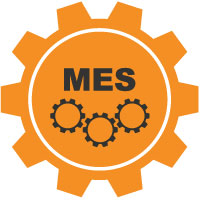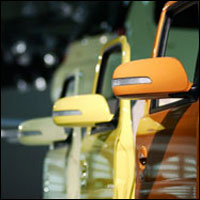CMS ERP
Automotive Sequencing
PlantTalk:Sequence for Automotive Sequencing Requirements
PlantTalk :Sequence is an integrated and comprehensive solution to the automotive sequencing requirements. Depending on the manufacturer, the sequencing requirement is referred to by many different names and acronyms, such as in-line vehicle sequencing (ILVS), sequential parts delivery (SPD), just-in-sequence (JIS), etc. The essence of automotive sequencing is for suppliers to deliver parts to the manufacturers just in time, and also in the proper build sequence, as requested by the customers.
The automobile manufacturers use a variety of communication methods to inform suppliers of the build sequence. Examples include:
- Using traditional EDI, the sequenced requirement usually comes in a form of an 866 transaction (Production Sequence). PlantTalk :Sequence imports a flat file with relevant information, extracted from the 866.
- In some instances, the sequenced build information is made available to the suppliers on the Internet, and it can be FTP'd into PlantTalk:Sequence.
- Another common way for suppliers to receive sequencing data is via a broadcast pulse directly into PlantTalk:Sequence. Usually, the pulse is triggered when the vehicle passes a predefined point on the manufacturer's assembly line (such as when the vehicle exits the paint section).
Once the suppliers know the requirements, there are several different options to manufacture and deliver the parts in sequence to the manufacturer. These mostly depend on the nature of the product, how the products get packaged, and other factors considered by the suppliers. PlantTalk:Sequence supports both commonly used options:
- Sometimes, the parts are built in batch (bulk), and are only sequenced at the end of the manufacturing process by placing the parts in proper sequence in the shipping rack, and then loading the shipping containers onto trucks in the proper sequence.
- Another option is to build in sequence, maximizing the utilization of floor space.
As an operator starts the process of picking and packing the shipping container, they will select the line that they are working on, then begin the normal process of printing labels, placing parts in the shipping container, verifying the proper parts are in the proper locations in the shipping container and then loading the truck in the proper order. To move to another line, the same operator can then re-select the line being worked on and using the process for that line, pick, pack and verify the racks for the parts defined to the selected line. Rack verification includes the scanning of each part in the shipping rack against its bin location to ensure packing accuracy. Additionally, each rack will be scanned as it is loaded in the truck to ensure loading accuracy. The shipment cannot be completed until all parts and racks are verified with RF scanners.
PlantTalk:Sequence supports common part and rack labeling requirements. Usually, each sequenced part will require a bar-coded label, along with some other basic part information, such as sequence number, customer part number, etc. It is important to finalize the label requirements for each program, as they may change. Part labels can vary in size from as small as .75" x 1.5", to a more common 2" x 4" label size, or larger.
Rack labels also vary in size and specification. A more common type is a standard 4" x 6" (or 4" x 6.5") AIAG-type shipping label containing several pieces of information. The rack number, high and low sequence number, Plant ID, Line ID, and more may be included on the label. In some instances, the rack label may actually be a simple 8.5" x 11 piece of paper (without the adhesive), with or without a barcode. The label may also need to contain a grid schematic of the rack with the part numbers listed in the appropriate rack positions.




